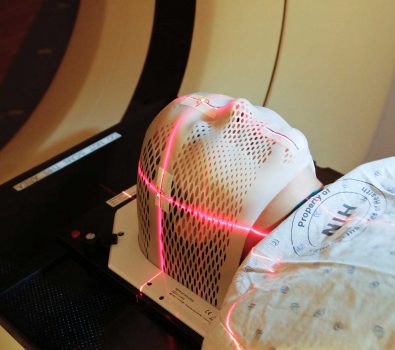If you or someone you know experiences chest pain, shortness of breath, or decreased lung function, it could be a sign of what could possibly be a pneumothorax.
Pneumothorax, or a punctured lung, is a relatively common medical condition where about 70% of pneumothorax cases occur without any underlying lung disease.
The remaining 30% are secondary pneumothorax cases, often associated with pre-existing lung conditions such as chronic obstructive pulmonary disease (COPD).
A punctured lung occurs when air leaks into the space between the lung and the chest wall, causing the lung to collapse partially or completely. But what does a punctured lung feel like?

Let’s discuss the different types of pneumothorax, including spontaneous, traumatic, and tension pneumothorax, and the specific characteristics and causes of each type to help you identify the symptoms better.
Causes and Risk Factors of Pneumothorax
If you have a pre-existing lung condition, such as chronic obstructive pulmonary disease (COPD) or cystic fibrosis, you’re at a higher risk of developing pneumothorax due to the weakened structure of your lungs.
In addition to these conditions, certain activities or situations can also increase your risk. For example, if you participate in contact sports or activities that involve rapid changes in air pressure, like scuba diving or flying, you may be more susceptible to developing pneumothorax.
Smoking is another significant risk factor, as it can weaken the lung tissue and increase the likelihood of a lung collapse. On top of that, if you have a family history of pneumothorax, your risk may be higher.
Also Read: Everything You Need To Know About A Micro-Invasive Carpal Tunnel Procedure
Types of Pneumothorax
Understanding the different types of pneumothorax can help you recognize the symptoms and seek prompt medical attention if needed. The different types of pneumothorax that you should be aware of are:
- Spontaneous Pneumothorax: This occurs without any apparent cause and is most commonly seen in tall, thin individuals.
- Traumatic Pneumothorax: Which is caused by an injury to the chest, such as a rib fracture or a puncture wound.
- Tension Pneumothorax: It is a life-threatening type of pneumothorax that occurs when air enters the pleural space but cannot escape, leading to increased pressure on the affected lung and heart.
- Iatrogenic Pneumothorax: This type that arises as a complication of medical procedures, such as a lung biopsy or the insertion of a central venous catheter.
Recognizing Chest Pain as a Symptom
If you feel sudden, sharp chest pain that comes with intense discomfort and makes it difficult for you to breathe, this could be a sign of pneumothorax.
This condition occurs when air accumulates in the space between your lungs and chest wall, causing them to collapse partially or fully.
Chest pain from pneumothorax can vary in intensity and may worsen with deep breaths or movement. You may also experience a sudden onset of shortness of breath or a feeling of tightness in your chest.
It is advisable to seek medical attention if you experience these symptoms, as pneumothorax can be a life-threatening condition. Always remember that early recognition and prompt treatment help manage this condition effectively.
Identifying Shortness of Breath
Feeling breathless can be a scary and uncomfortable sensation; you must recognize and address it promptly for optimal well-being. Shortness of breath is a common symptom of pneumothorax, a condition where air accumulates in the space between the lungs and chest wall.
It can occur suddenly and without warning. If you find yourself struggling to catch your breath, even during minimal physical activity or at rest, it could indicate a pneumothorax. You may also experience a rapid heart rate, chest tightness, or wheezing.
Seek medical attention if you are experiencing these symptoms, as untreated pneumothorax can lead to serious complications such as lung collapse.
Assessing Decreased Lung Function
If you’re having trouble breathing, your lung function to determine if there’s a decrease in its capacity has to be checked. One way to assess decreased lung function is through spirometry, a test that measures how much air you can inhale and exhale and how quickly you can do it.
During the test, you’ll be asked to take a deep breath and then blow into a tube connected to a machine. The machine will record your lung capacity and the speed at which you can exhale. Another method to assess lung function is through a chest X-ray, which can reveal any abnormalities or damage to the lungs.
Consult a healthcare professional if you were to experience any persistent shortness of breath or suspect a decrease in lung function.
Also Read: How an Advanced Nurse Program Can be Beneficial for a Healthcare Worker?
Conclusion
Now that you understand the symptoms of pneumothorax or punctured lung, keep in mind and recognize the causes and risk factors, such as smoking or lung disease. There are different types of pneumothorax, including spontaneous and traumatic.
If you experience chest pain, it could be a sign of pneumothorax, so deal with it as soon as possible and receive medical attention. Stay vigilant and take care of your health.




